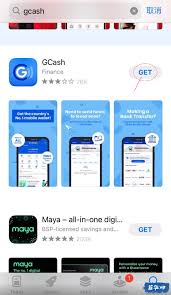Today, as
1. Overview of the third-party payment market in the Philippines
As one of the pioneer countries in mobile payment and e-commerce in Southeast Asia, the Philippines' third-party payment market has grown rapidly in recent years. According to the latest data, the Internet penetration rate in the Philippines has exceeded 70%, and the number of smartphone users continues to rise, providing fertile ground for third-party payments. At the same time, the government’s supportive policies for financial technology, the continuously improving financial infrastructure, and consumers’ increased acceptance of cashless payments have jointly promoted the prosperity of the third-party payment market in the Philippines.
![[Exclusive Analysis] New Trends in the Philippines' Third-Party Payment Industry in 2024: Convenient [Exclusive Analysis] New Trends in the Philippines' Third-Party Payment Industry in 2024: Convenient](https://us.bifu.us/zb_users/upload/water/2024-11-08/672dba922a1e8.jpeg)
2. The rise of cross-border payments in the Philippines
As the Philippines becomes increasingly closely connected with neighboring countries and global markets, cross-border payments have become a highlight of the Philippines' third-party payment market. Take JKO Pay as an example. As a well-known third-party payment platform in Taiwan, JKO Pay has successfully entered the Philippine market through cooperation with Japanese payment platforms such as PayPay, providing Filipino users with more diversified cross-border services. Payment options. Users can easily complete cross-border consumption without carrying large amounts of cash and enjoy a convenient payment experience.
3. Localization Innovation: Application of Easy Card in the Philippines
It is worth noting that in addition to the introduction of cross-border payment platforms, the Philippine third-party payment market has also welcomed the model of localized innovation-Easy Card. The EasyCard, originally widely used in Taiwan, has also become popular in Okinawa, the Philippines and other places. With its convenient recharge method, wide acceptance network and preferential exchange rate policy, EasyCard has become the new favorite of Filipino tourists and local residents. The successful implementation of Easy Card not only enriches the payment methods in the Philippines, but also demonstrates the huge potential of third-party payment platforms in localized innovation.
4. Future prospects of the third-party payment industry in the Philippines
Looking to the future, the third-party payment industry in the Philippines will continue to maintain rapid growth. On the one hand, with the continuous advancement and popularization of financial technology, more innovative payment methods and application scenarios will continue to emerge; on the other hand, the improvement of government regulatory policies and the intensification of market competition will also promote the continuous improvement of third-party payment platforms Service quality and user experience.
In terms of cross-border payments, with the in-depth implementation of the “One Belt, One Road” initiative and the entry into force of the Regional Comprehensive Economic Partnership (RCEP), trade exchanges between the Philippines and neighboring countries and global markets will become more frequent, and the demand for cross-border payments will continue to grow. . Third-party payment platforms should seize the opportunity, strengthen international cooperation, expand cross-border payment services, and provide Filipino users with more convenient and secure cross-border payment services.
In terms of localized innovation, third-party payment platforms should have a deep understanding of local market needs and consumer habits in the Philippines, and launch more payment products and services that are in line with local characteristics. At the same time, we will strengthen cooperation with local merchants, expand the coverage of the acceptance network, and improve user payment convenience and satisfaction.
5. Conclusion
The rapid development of the third-party payment industry in the Philippines has injected strong impetus into the country's financial technology progress and the digital transformation of the economy. With the continuous advancement of cross-border payment and localization innovation, the Philippine third-party payment market will usher in broader development prospects. We look forward to seeing the emergence of more innovative payment methods and the continued optimization of the payment ecosystem in the future, bringing more convenience and surprises to Filipino consumers.

 bifu pay
bifu pay

![[Latest 2024] Philippine GCash Beginner Registration Guide: Teach you step by step to easily enjoy t](https://us.bifu.us/zb_users/upload/water/2024-11-08/672dbaebc1800.jpeg)



发表评论
发表评论: